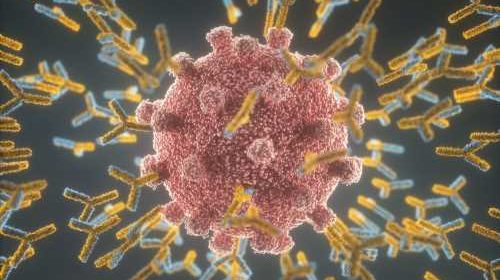taking percocet after drinking alcohol

In a recent study published in iScience, researchers assessed the effect of severe acute respiratory syndrome coronavirus 2 (SARS-CoV-2) infection with a non-Omicron variant on SARS-CoV-2 BA.4/5 neutralization.

Background
The interval between vaccination and infection influences the production of cross-neutralizing antibodies against the SARS-CoV-2 Omicron BA.1 variant; a longer period results in a higher generation of cross-neutralizing antibodies. Furthermore, a longer gap between the initial two vaccinations elicits more neutralizing as well as spike (S)-binding antibodies against Omicron BA.1 and non-Omicron variants of concern (VOCs) than the conventional dose interval.
Other variables, including symptoms, how to buy viagra buy hong kong next day the causal viral strain, and viral replication, are anticipated to influence the immune system's response to SARS-CoV-2 infection. The primary causes of humoral immune responses against SARS-CoV-2 during breakthrough infections have not been thoroughly explained.
About the study
In the present study, the team analyzed the associations between the magnitude of cross-neutralization activity elicited against SARS-CoV-2 variants, mainly Omicron sub-lineage viruses.
Using upper respiratory materials obtained within four days of SARS-CoV-2 diagnosis or symptom onset, the team undertook a virological characterization of 220 breakthrough coronavirus disease 2019 (COVID-19) patients diagnosed post-second immunization. The team described the acute phases as the span within four days of diagnosis, while the convalescent phase was seven days following diagnosis or symptom onset.
For additional analysis, 26 cases in which sera were obtained during the acute phase as well as 51 cases in which sera were collected during the convalescent phase, were included. In these instances, serum-neutralizing activity was evaluated using live virus-based techniques.
Results
Polymerase chain reaction (PCR) and analysis of the viral genome performed for spike mutation detection revealed that most infected viruses were either SARS-CoV-2 Alpha or Delta variants. In upper respiratory samples, infectious viral titers and viral ribonucleic acid (RNA) loads were considerably greater in Delta-infected people than in Alpha-infected persons. However, infectious viral titers and viral RNA loads were positively associated with the same magnitude in both variants, indicating no difference between the variants in the association between the infectious viral quantity and viral RNA levels.
Antibodies eBook

These findings indicate that Delta replicated more rapidly in the upper respiratory tract of people with a breakthrough infection. During the convalescent period, the anti-S antibody titers were equivalent to cases with breakthrough infection with no report of prior infection.
In the convalescent phase, neutralizing activity associated with all variants was greater than in the acute phase. The neutralizing activity of acute phase sera against Beta, Delta, and Omicron BA.1, BA.2, and BA.4/5 viruses were lower than that of the ancestral strain, while over half of all the BA.4/5 neutralizing titers were found to be less than the detection limit. The neutralizing activity of convalescent phase sera against the Beta and Omicron BA.1, BA.2, and BA.4/5 viruses was lower than that of the original strain.
Notably, there were no discernible variations in neutralizing activity between BA.1, BA.2, and BA.4/5 viruses among serum samples obtained from convalescent-phase patients, indicating minor antigenic differences across Omicron sub-lineages detected in non-Omicron breakthrough serum samples.
The convalescent and acute neutralization titers against BA.2 were lower than those against the ancestral strain. Convalescent phase sera obtained from Delta breakthrough sera had more neutralizing activity against Beta and ancestral variants than convalescent phase sera from Alpha breakthrough infections, but both exhibited equal neutralization activity against Delta and Alpha variants.
Infection with the Delta variant was favorably linked with neutralization titers against the ancestral and Beta viruses, supporting the aforementioned results. In contrast, the period between vaccination and infection was positively linked with neutralization titers to ancestral, Beta, and Omicron BA.1, BA.2, and BA.4/5 infections in convalescent-phase sera.
In addition, there was a substantial correlation between viral load in the upper respiratory and neutralization titers in response to all variants in convalescent-phase serum samples. This showed that the viral load detected in the upper respiratory tract during diagnosis modulated antibody responses throughout the convalescent period following a new infection.
The team investigated the association of the causal viral lineage with variant-serum distances and observed no changes between the convalescent and acute phases. This showed that the extent of serum neutralization did not differ between the Delta and Alpha breakthrough infections. Furthermore, the Delta and Alpha breakthrough infections affected the magnitude of neutralization against diverse antigenic variants equivalently.
Conclusion
Overall, the study findings discovered that non-Omicron breakthrough infections induced strong cross-neutralizing action against SARS-CoV-2 Omicron variants such as the BA.4/5 sub-lineage across the antigenic barrier. The results indicated that the duration of the post-vaccination incubation interval, and not the antigenicity associated with the infecting virus or the viral load detected in the upper respiratory tract, is a crucial factor in extending neutralization to antigenically different viral variants.
- Miyamoto, S. et al. (2023) "Non-Omicron breakthrough infection with higher viral load and longer vaccination-infection interval improves SARS-CoV-2 BA.4/5 neutralization", iScience, p. 105969. doi: 10.1016/j.isci.2023.105969. https://www.sciencedirect.com/science/article/pii/S2589004223000469
Posted in: Medical Science News | Medical Research News | Disease/Infection News
Tags: Antibodies, Antibody, Coronavirus, Coronavirus Disease COVID-19, covid-19, Genome, Immune System, Immunization, Mutation, Omicron, Polymerase, Polymerase Chain Reaction, Respiratory, Ribonucleic Acid, RNA, SARS, SARS-CoV-2, Severe Acute Respiratory, Severe Acute Respiratory Syndrome, Syndrome, Virus

Written by
Bhavana Kunkalikar
Bhavana Kunkalikar is a medical writer based in Goa, India. Her academic background is in Pharmaceutical sciences and she holds a Bachelor's degree in Pharmacy. Her educational background allowed her to foster an interest in anatomical and physiological sciences. Her college project work based on ‘The manifestations and causes of sickle cell anemia’ formed the stepping stone to a life-long fascination with human pathophysiology.
Source: Read Full Article